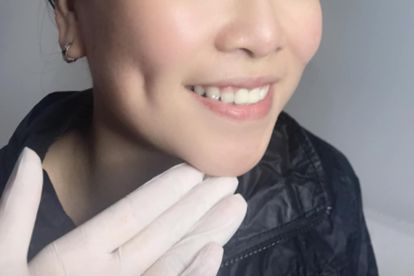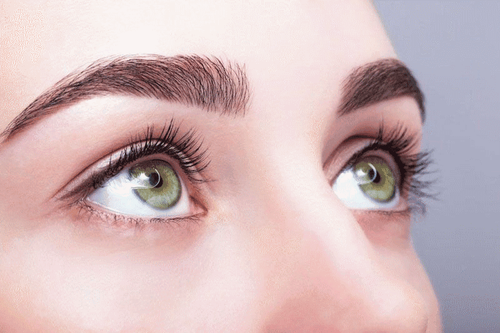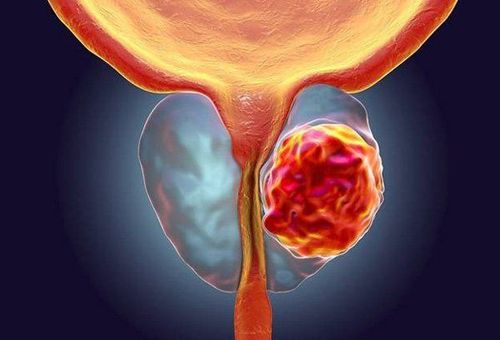This is an automatically translated article.
Dimples can be seen on one or both cheeks. Not everyone has dimples, but some have and some don't. Dimples are thought to be formed based on the difference of muscles and skin on the face.
1. What are dimples?
Dimples are small indentations that appear on the cheeks. Dimples can be seen on one or both sides of the mouth. Dimples are also quite common, but not everyone has them. Because dimples are formed based on the difference of muscles and skin on the face.
Genetically, dimples are generally thought to be hereditary, although there is some debate about this. A study of 2,300 people found that about 37% of the participants had dimples. However, the prevalence of the dimple phenotype may vary by population.
2. How are dimples formed?
Dimples form due to a change in a muscle in the face called the zygomaticus major. The zygomatic major muscle is involved in facial expression. This muscle is responsible for raising the corners of your mouth when you smile.
In people without dimples, the zygomatic muscle usually starts from a bone in your cheek called the cheekbone. This muscle then runs downward, connecting to the corner of your mouth.
Meanwhile, in people with dimples, the zygomatic major is divided into two separate muscle bundles on the way down to the mouth. One bundle connects at the corner of the mouth, and the other joins below the corner of the mouth and is also connected to the skin above it.
A division like this may be called the double zygomatic major. The movement of skin over this muscle when you smile causes dimples to form.
Because dimples can be the result of muscle changes that occur during fetal development, it is sometimes mistakenly referred to as a birth defect.
It is important for you to know that dimples are not only common but they do not have any adverse effects on your health.

Má lúm đồng tiền không hề gây ảnh hưởng đến sức khỏe của bạn
3. Genetic dimples?
You inherit half the genome from your mother and the other half from your father. Most genes have at least two variants, called alleles. Alleles are divided into dominant alleles and recessive alleles. Precisely dominant traits tend to be more “dominant” than recessive traits. If both your parents exhibit a dominant trait, the chances are high that you will also exhibit the same trait.
Experts often say that dimples are a dominant genetic trait. However, currently very little research has been done on the genetics of dimples.
However, it is commonly observed that people with dimples often give birth to children with dimples. This suggests that it is a dominantly inherited trait. However, not every parent with dimples means all their children have dimples.
Also, it is a fact that some people can have dimples for life, but in some people dimples can actually change over time. Specifically, there are people who have dimples when they are children but lose them when they are adults. Conversely, there are also children born without dimples who may develop the condition during their childhood.
Because the genetic pattern of dimples is unpredictable, some researchers classify them as an irregularly dominant trait. This means that although the condition is often inherited as a dominant trait, it is not always the case.
In addition, the genetic condition of dimples may not be as simple as a set of alleles. There may be many genes that can actually affect dimples. So we need to do more research to find out the exact answer about this situation.
4. Is creating dimples considered attractive?
According to some cultures, dimples are actually associated with beauty and even luck.
A study of human facial features has shown that the appearance of features such as dimples can make a person's expression or smile more noticeable.

Má lúm đồng tiền có thể can thiệp dưới chỉ dẫn của bác sĩ chuyên khoa
5. How to have dimples
You find dimples very attractive, and you want them too. Currently there is a plastic surgery method to create dimples.
During the surgery, the doctor will make a small incision at the place where the dimple is intended. Then, a small amount of muscle is carefully removed. A small, stitched stitch is threaded through the skin and muscle on either side of that area. This procedure connects the skin and muscles together to create dimples.
If you're interested in this approach, be sure to talk to your plastic surgeon about its benefits and risks.
So dimples could be structural differences in one of the muscles in your face. They can be a genetic trait, or they can be created through plastic surgery.
Please dial HOTLINE for more information or register for an appointment HERE. Download MyVinmec app to make appointments faster and to manage your bookings easily.













